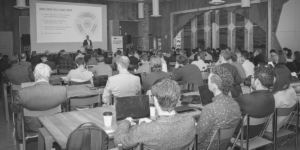As an open source standard, the Mobility Data Specification (MDS) and forthcoming Curb Data Specification (CDS) evolve through the contributions of individuals and organizations. Recently, the MDS Working Group Steering Committees – the groups of OMF members that lead the development process and help set the direction for each cycle – met to evaluate proposed features for the current release. These check-ins allow them to review feature proposals, align current work to goals and use cases, and ensure the release features and work is on track.
In this most recent review process, the group used a new rubric to help guide the evaluation. The rubric looks at feature utility, stakeholder adoption, implementation simplicity, consensus, and work completed as part of the evaluation criteria. If you’re thinking about making a contribution to one of the OMF’s open source projects, here are some things to consider about how your proposed feature gets evaluated during the release process:
- Utility: Is this solving a real known or likely problem for multiple groups of stakeholders with tangible utility and defined use cases?
- Adoption: Are multiple stakeholders interested in or committed to adopting the feature in the next release, and willing to provide feedback?
- Simplicity: How simple is this solution to understand and implement by both data producers and consumers?
- Consensus: Is this feature designed in a way that will encourage consensus on direction and level of urgency from other working group members? What is the general level of consensus that already exists, if any?
- Work: How much work is already completed and how much is left to be done to make it a viable addition to the specification?
The outcomes from the most recent review have been provided back to the OMF member leadership committees and the MDS community on Github, where all development happens. We welcome feedback on the evaluation criteria as we work to put them into practice and solidify them over the coming months. And, we encourage participants in our working groups to consider the evaluation categories and include answers to key questions in future feature proposals.
But as their name suggests, working groups are where we work on new features and get them ready for inclusion into the specification. We encourage people to bring proposals and ideas to the working group, even if all the details haven’t been figured out. We’ll help create a space for collaborative discussion and development of your proposal.
If you’re interested in getting involved, learn more about becoming a contributor. Getting involved is easy, and only requires a few simple steps. First, review our contributor and community guidelines. Next, sign up for the mailing list that aligns with your interests (MDS and/or curb management). Then, participate on Github and join regular working group meetings. Questions? Don’t hesitate to get in touch.




